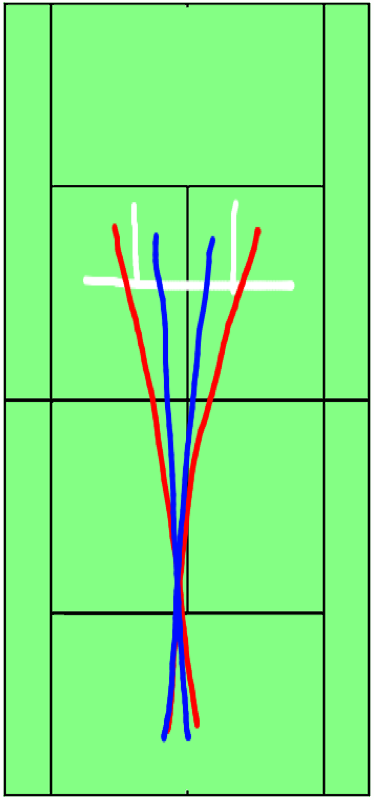Here is the deal, you are up a break 4-1 in the first set. Your opponent is at a comparable level to yourself and the match can swing either way. Thankfully, all your preparations heading into the match have panned out, sprinkled with just enough unforced errors from your opponent at inopportune times. The nerves of your opponent were not as sharp as yours, thus causing more unforced errors than they would usually make. The good news is you are up a break 4-1.
Then your opponent does the unthinkable and STOPS MISSING! (I hate when that happens!)
The rookie mistake is to accuse your opponent of treeing (playing unbelievable, this can't be!). You begin to panic and overhit. The obligatory 2-3 unforced errors a game are cut down to 0 or 1. Your opponent has suddenly relaxed into the match and settled down. The person on the other side of the net desperately wants to claw their way back into the match. Points that were coming easily are becoming less frequent and rallies of 10 plus shots are becoming the norm. Your heartrate starts to accelerate and frustration starts to build because of their solid play. How can this be?
When they stop missing, THIS IS WHEN THE MATCH BEGINS. You have to be on alert for when this moment comes. It might come at 4-1 or 5-2 or 2-0 up in the second set. But against any good player who is mentally strong, they will eventually decide to put the ball in the middle of the court- over and over again. When you think about it, nothing bad has happened and you should be grateful you have a 4-1 lead. Now is the time to remain calm and be ready to wrestle into some long rallies.
It is very conceivable the rallies won't go your way and you find yourself up 4-3, losing 2 consecutive games. Again, nothing bad has happend, you are still on serve. You have to realize at 4-1 down, they had nothing to lose and maybe loosened up a bit. With the pressure off of them, lots of players can recover from a break down. However, once the score reaches 4-3 on serve, the pressure is back on for them. And as long as you have remained emotionally calm and not do anything drastic, you can weasel your way to another break. Being emotionally calm, not reacting or panicking to the 4-3 scoreline will only increase your odds of winning the set. If you panic, you have simply decreased your odds.
At 4-3, this is not the time to try fancy plays (interject new strategies), but this is the time to bring high percentage tennis. Lots of meat and potatoes and see if they can hang with you mentally (maybe they will crack). The rookie mistake at 4-3 would be to change strategies completely and be hotheaded. This is a sure recipe for losing the set 7-5.
The goal at the end of the day is to maximize your odds of winning. You want to stack all the odds in your favor (remember, your opponent on the otherside has problems too) and execute your strengths to their weakness. Towards the end of the set is when people begin to crack. Weak backhands at 1-0 are easy to make, but weak backhands directed to an opponent become increasingly difficult at 4-3 and 5-4. You have to work on their head and don't let them off the hook with cheap unforced errors. If they keep up the good tennis, atleast you played smart and didn't let go of the rope.
Good luck with your next 4-1 lead!
 Monday, October 31, 2011 at 12:48PM
Monday, October 31, 2011 at 12:48PM  CAtennis
CAtennis 

